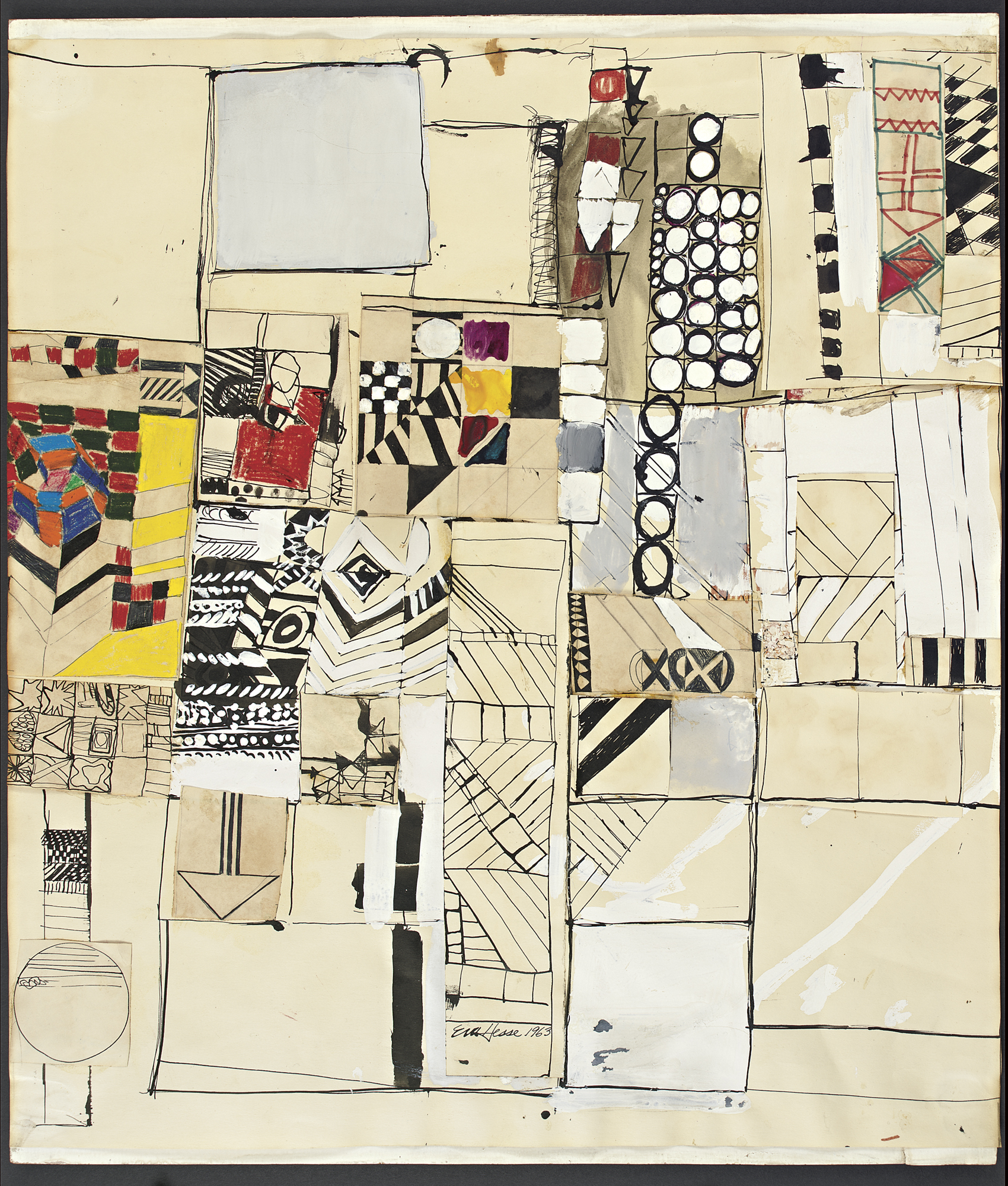
Eva Hesse, Untitled, 1963. Mixed media and collage on paper, 22 × 19 5/8 inches (55.9 × 49.8 cm). Gift of Barbara Lee, The Barbara Lee Collection of Art by Women. Courtesy Hauser & Wirth. © The Estate of Eva Hesse
Although a brain tumor ended the life of Eva Hesse at age thirty-four, the style of postminimalism she developed during her abbreviated career has made her one of the most influential artists of the postwar period. Hesse blended the industrial materials and hard, geometric shapes of minimalism with softer, more organic forms to create work that suggests both human pain and mechanical indifference. While the work for which she has received the most recognition is sculptural, drawings and collage are an important part of her oeuvre. The artist’s first solo exhibition, at Allan Stone Gallery in March 1963, consisted of works on paper, and she continued making drawings after she began to create sculpture in 1964–65.
In 1959, Hesse graduated from Yale University’s School of Art and Architecture, where she studied color theory and advanced painting with Josef Albers, and gained a reputation as a talented colorist. Untitled shows the artist experimenting with various color combinations, as well as with black-and-white forms. After leaving Yale, Hesse worked as a textile designer in New York. The gridded composition of Untitled, in which each rectangle bears a distinct design, is reminiscent of a woven piece of fabric or a quilt, and also anticipates Hesse’s later use of the grid in her three-dimensional work.
Hesse is one of the most significant artists of the twentieth century. Untitled is representative of an important early moment in her career, before she turned to sculpture. This piece strengthens the ICA/Boston’s holdings of works by important female artists, and complements the pivotal Hesse sculptures in the collection.
2014.25